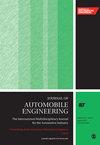高速场景下重型车辆自动排障避障策略研究
IF 1.5
4区 工程技术
Q3 ENGINEERING, MECHANICAL
Proceedings of the Institution of Mechanical Engineers Part D-Journal of Automobile Engineering
Pub Date : 2024-09-17
DOI:10.1177/09544070241276062
引用次数: 0
摘要
随着公路运输业的快速发展,重型车辆编队的安全性和效率受到了极大关注。由于重型车辆质量大、响应时间延迟、视线障碍等原因,避障成为车辆面临的挑战,本研究通过引入基于深度强化学习的重型车辆排协同避障系统,解决了这一难题。该系统包括三个主要模块:感知、决策和控制。首先,感知模块获取实时环境数据。随后,决策模块根据获取的数据制定避障决策。具体来说,它在低碰撞风险情况下实施两阶段制动避障策略,而在适合转向操纵的高碰撞风险条件下,采用五度多项式规划和跟踪避障路径。控制模块利用局部多代理深度确定性策略梯度(LADDPG)算法训练重型车辆排代理,确保编队的维护,同时减少与其他车辆和障碍物的碰撞。通过仿真实验证实了所提系统的有效性,证明了其对各种交通条件的适应性,选择了合适的避障策略,并显著提高了避障性能和重型车辆排的稳定性。本文章由计算机程序翻译,如有差异,请以英文原文为准。
Research on Obstacle Avoidance Strategy of Automated Heavy Vehicle Platoon in High-Speed Scenarios
Amidst the rapid progression of the road transport industry, the safety and efficiency of heavy-vehicle platoons have garnered significant attention. The study tackles the challenge of obstacle avoidance presented by vehicles owing to their considerable mass, delayed response times, and line-of-sight impediments, by introducing a cooperative obstacle avoidance system for heavy-vehicle platoons based on deep reinforcement learning. The system comprises three primary modules: perception, decision-making, and control. Initially, the perception module acquires real-time environmental data. Subsequently, the decision-making module formulates obstacle avoidance decisions based on the acquired data. Specifically, it implements a two-stage braking obstacle avoidance strategy under low collision risk scenarios, while employing a fifth-degree polynomial for planning and tracking obstacle avoidance paths under high collision risk conditions suitable for steering maneuvers. The control module utilizes the local multi-agent deep deterministic policy gradient (LADDPG) algorithm to train the heavy-vehicle platoon agents, ensuring the formation’s maintenance while mitigating collisions with other vehicles and obstacles. The effectiveness of the proposed system is substantiated through simulation experiments, demonstrating its adaptability to various traffic conditions, selection of suitable obstacle avoidance strategies, and significant enhancement of obstacle avoidance performance and heavy-vehicle platoon stability.
求助全文
通过发布文献求助,成功后即可免费获取论文全文。
去求助
来源期刊

CiteScore
4.40
自引率
17.60%
发文量
263
审稿时长
3.5 months
期刊介绍:
The Journal of Automobile Engineering is an established, high quality multi-disciplinary journal which publishes the very best peer-reviewed science and engineering in the field.
 求助内容:
求助内容: 应助结果提醒方式:
应助结果提醒方式:


